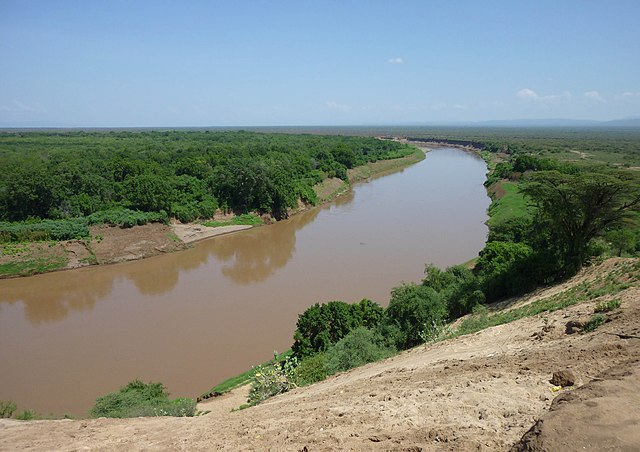
Nestled in the southwestern part of Ethiopia, Omo National Park is a treasure trove of biodiversity and natural beauty. This relatively undiscovered park offers visitors a chance to explore its unique landscapes, vibrant ecosystems, and rich cultural heritage. In this comprehensive guide, we’ll delve into the park’s geography, wildlife, cultural significance, activities, and practical tips for making the most of your visit.
Overview of Omo National Park
Omo National Park spans approximately 4,068 square kilometers and is situated in the Omo Valley, an area renowned for its stunning scenery and diverse ethnic groups. Established in 1980, the park serves as a critical habitat for various flora and fauna, including several endemic species.
Geography and Climate
Omo National Park is characterized by a diverse landscape that includes savannahs, forests, and wetlands. The park is bordered by the Omo River to the west, which is essential for sustaining its wildlife. The terrain varies from flat plains to hilly areas, offering breathtaking views and numerous hiking opportunities.
The climate in Omo National Park is typically tropical, with a rainy season from June to September. The dry season, from October to May, is the best time for wildlife viewing, as animals are more likely to congregate around water sources.
Biodiversity in Omo National Park
Omo National Park is home to an impressive variety of wildlife, making it a prime destination for nature enthusiasts and photographers alike.
Mammals
The park hosts over 40 mammal species, including:
- African Elephant: The largest land mammal, elephants roam freely throughout the park, often seen near the Omo River.
- Buffalo: Large herds of African buffalo can be spotted, especially in the grassy plains.
- Antelopes: Various species, including the Grant’s gazelle, waterbuck, and bushbuck, thrive in the park’s habitats.
- Predators: Lions, leopards, and hyenas can be found in Omo, although they are more elusive.
Birds
Birdwatchers will be delighted by the park’s avian diversity, with over 300 bird species recorded. Notable species include:
- African Fish Eagle: Commonly seen along the riverbanks, this bird is easily recognizable by its striking appearance and call.
- Hornbills: These birds add color and character to the park’s ecosystems.
- Flamingos: Occasionally spotted in the wetlands, these beautiful birds enhance the park’s scenic beauty.
Flora
The park’s vegetation ranges from grasslands to dense woodlands. Noteworthy plant species include acacia trees, which provide shade and food for various wildlife. The wetlands are rich in reeds and other aquatic plants, vital for supporting the park’s biodiversity.
Cultural Significance
Omo National Park is not just a haven for wildlife; it is also home to several indigenous communities, each with unique customs and traditions. The most prominent ethnic groups include the Mursi, Karo, and Hamar peoples.
The Mursi People
The Mursi are perhaps the most famous tribe in the region, known for their distinctive lip plates and body art. Their culture is deeply intertwined with the natural environment, and they have lived in harmony with the land for generations.
The Hamar Tribe
The Hamar people are known for their unique coming-of-age ceremonies, which often involve jumping over cattle as a rite of passage for young men. The Hamar also engage in traditional cattle herding and farming, showcasing their rich cultural heritage.
Activities in Omo National Park
Omo National Park offers a variety of activities for visitors, from wildlife safaris to cultural experiences.
Wildlife Safaris
Guided safaris are the best way to explore the park’s diverse ecosystems. Expert guides can help spot elusive wildlife and provide valuable insights into the park’s ecology.
Birdwatching
With its abundant bird species, Omo is a paradise for birdwatchers. Early morning walks and boat trips along the Omo River can yield exciting sightings.
Cultural Tours
Visiting local communities provides an enriching experience. Guided cultural tours offer opportunities to learn about traditional practices, crafts, and daily life.
Hiking and Trekking
For adventure seekers, the park’s varied terrain offers numerous hiking trails. The more remote areas provide a chance to disconnect and immerse oneself in nature.
Practical Tips for Visiting Omo National Park
To ensure a safe and enjoyable visit, consider the following tips:
Best Time to Visit
The dry season, from October to May, is ideal for wildlife viewing. The park is more accessible during this period, with better visibility of animals.
Getting There
Omo National Park is accessible from Jinka, a small town that serves as the gateway to the park. Roads can be rough, so hiring a 4WD vehicle is recommended.
Accommodation
While accommodation options within the park are limited, nearby towns like Jinka offer guesthouses and lodges. Camping within the park is also possible for those seeking a more immersive experience.
Safety Precautions
Visitors should be aware of their surroundings and respect wildlife distances. It’s advisable to travel with a guide, especially in remote areas.
Health Considerations
Travelers should consult a healthcare provider about vaccinations and malaria prophylaxis before visiting. Carrying a first-aid kit is also a good idea.
Conclusion
Omo National Park is a hidden gem in Ethiopia, offering a unique blend of wildlife, stunning landscapes, and rich cultural experiences. Whether you’re an avid nature lover, a birdwatching enthusiast, or a cultural explorer, Omo has something to offer everyone. As tourism grows, it’s essential to visit responsibly and respect the delicate ecosystems and communities that make this park so special. Embark on an adventure to Omo National Park, and discover the beauty and diversity of this remarkable region.
